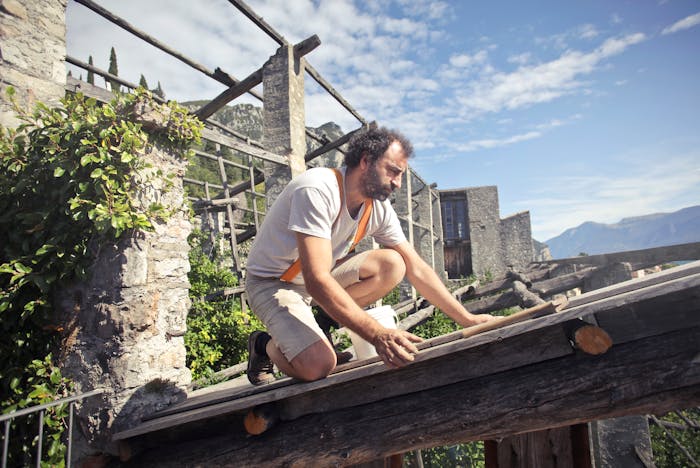Roof repairs are often necessary but can feel intrusive for homeowners who value their comfort, privacy, and routine. From loud tools and foot traffic to dust and potential damage to landscaping, the process can bring a degree of stress. However, experienced roofers have developed methods to reduce the disruption during a repair project. With the right preparation, communication, and on-site care, roofing teams can do extensive work while maintaining a respectful and minimally invasive presence. The goal is to ensure the structural improvements come without significantly interrupting the lives of those inside the home.
Steps roofers take to reduce the impact of home repair
1. Strategies That Prioritize Comfort and Cleanliness
One of the most effective ways roofers limit disruption is by controlling the footprint of their activity. This begins with precise planning—defining the boundaries of the work zone, organizing tools and materials in a designated area, and using protective coverings on driveways, landscaping, and any adjacent structures. By keeping these zones marked and secure, roofers prevent unnecessary mess or damage while maintaining a professional and respectful appearance. Clean-up is treated as a continuous task rather than something reserved for the end of the project. Crews gather debris, sweep work areas, and regularly check the surroundings for out-of-place materials. This approach helps homeowners use their outdoor spaces safely and comfortably during repairs. Additionally, efforts like placing plywood over windows or installing netting to catch debris show the consideration teams put into preserving the property’s appearance.
2. Managing Noise and Daily Routines During Roofing Work
Sound control plays a key role in minimizing disruption. Roof repairs inevitably generate noise, but careful scheduling and thoughtful communication can make this easier to manage. Many contractors plan the loudest tasks for specific timeframes, allowing residents to adjust their activities accordingly. This includes notifying homeowners when to expect hammering or when specific machinery will be used. Some even use quieter equipment where possible or limit the duration of high-impact tools. Homeowners who work from home, have young children, or manage pets appreciate this level of predictability. Clear communication also includes daily updates and immediate notifications, such as weather delays or material deliveries, if anything changes. Roofing companies that handle these interactions with care build trust and reduce the emotional strain of a project. One team offering this thoughtful coordination is known for their roofing services in Kansas City, where they tailor schedules to fit the unique routines of each property. Such responsiveness can make all the difference in how a repair project is experienced.
3. Protecting Landscaping and Exterior Features from Damage
While the roof is the focus of the repair, what surrounds the house must also be treated with care. Roofing can involve moving large materials, discarded shingles, and other debris that could easily damage flower beds, patios, or lawn features. To prevent this, roofers use tarps to catch falling items and position collection bins close to the home so debris doesn’t scatter across the yard. They also reposition ladders and scaffolding throughout the project to reduce impact on specific areas. The importance of walkways and driveways is also recognized, with some crews laying down boards to shield surfaces from heavy foot traffic or equipment. Landscaping, especially delicate plant beds or trees near the house, is flagged or roped off to avoid accidental harm. These actions preserve the property’s curb appeal and prevent post-project cleanup costs. When this kind of care is taken, it demonstrates a clear understanding that a roofing job should leave no unnecessary trace beyond the roof itself.
4. Streamlining the Process to Minimize Time on Site
The faster a roofing job is completed, the less time there is for disruption. Roofing teams emphasize coordination and efficiency to reduce the project length without cutting corners. This means having materials ready before the job begins, setting a clear plan of daily tasks, and deploying a team large enough to handle the job within the planned timeframe. Delays prolong discomfort and can increase the risk of accidents or weather exposure. Roofers reduce how long property owners need to navigate obstacles around their home by keeping the process focused and tight. Some companies also work in sections, completing one side of the roof at a time, which allows parts of the property to remain fully accessible. This phased approach keeps driveways clear, reduces noise concentration, and ensures safer movement around the house. Efficient workflows paired with attentive communication support a smoother experience overall.
Roofing repairs don’t have to disrupt daily life when managed thoughtfully. By organizing job sites carefully, respecting homeowners’ routines, safeguarding outdoor spaces, and working efficiently, roofing professionals help ensure the process is as seamless as possible. These practices reflect a more profound respect for the people behind the property and the spaces they inhabit. With the right approach, a roof repair becomes more than just a structural fix—it’s a service delivered with care, minimizing intrusion while maximizing protection. Homeowners deserve a strong roof over their heads and a sense of calm throughout the process, and that balance is well within reach when disruption is thoughtfully addressed from start to finish.


